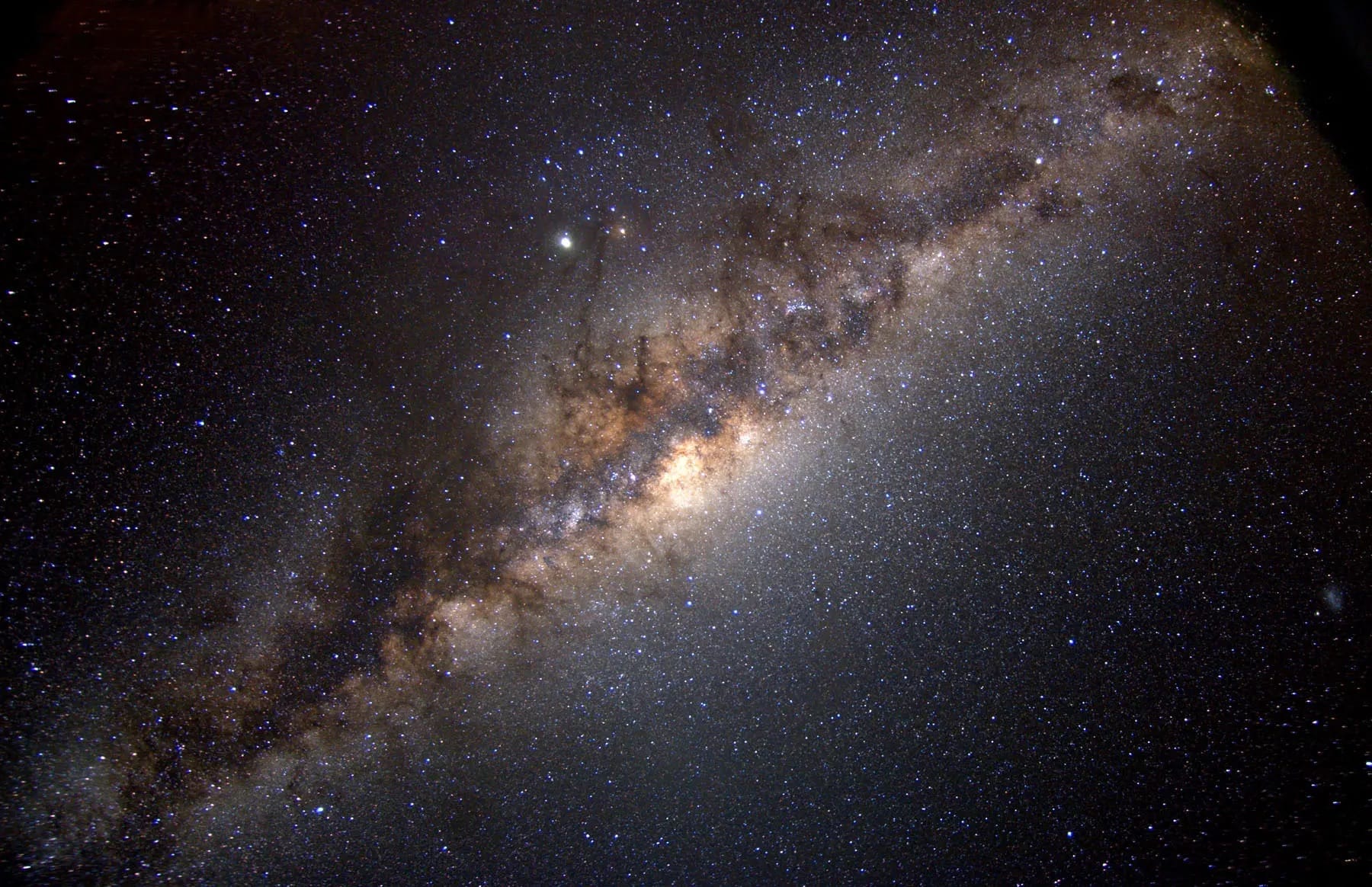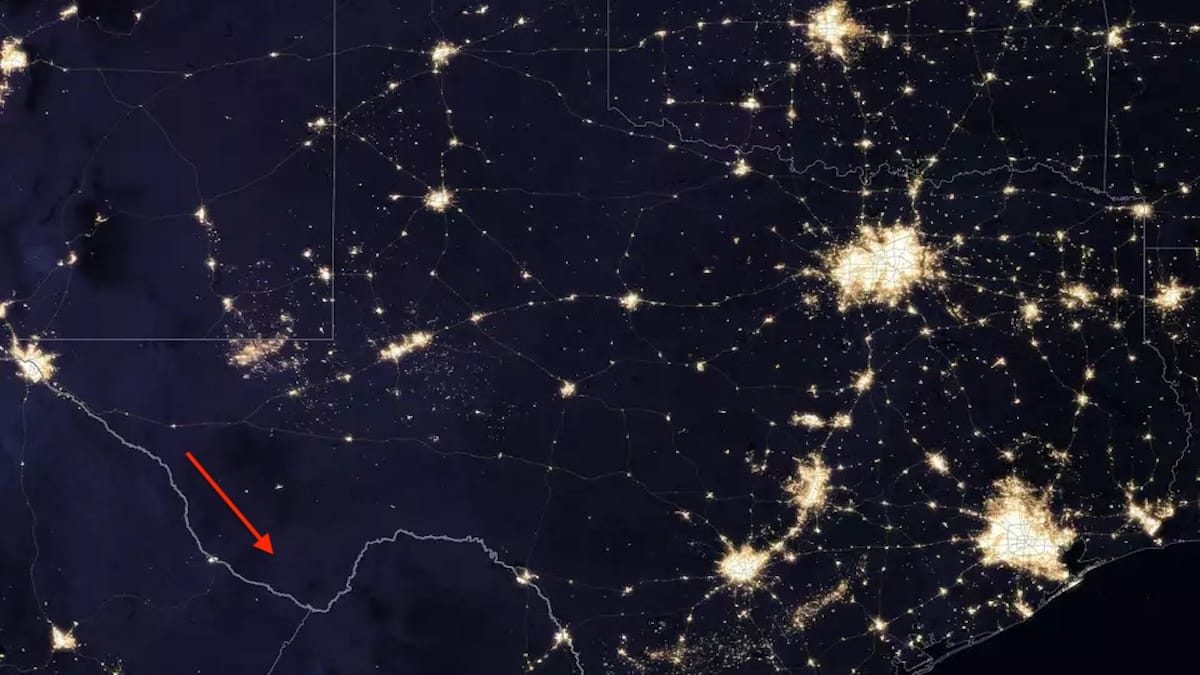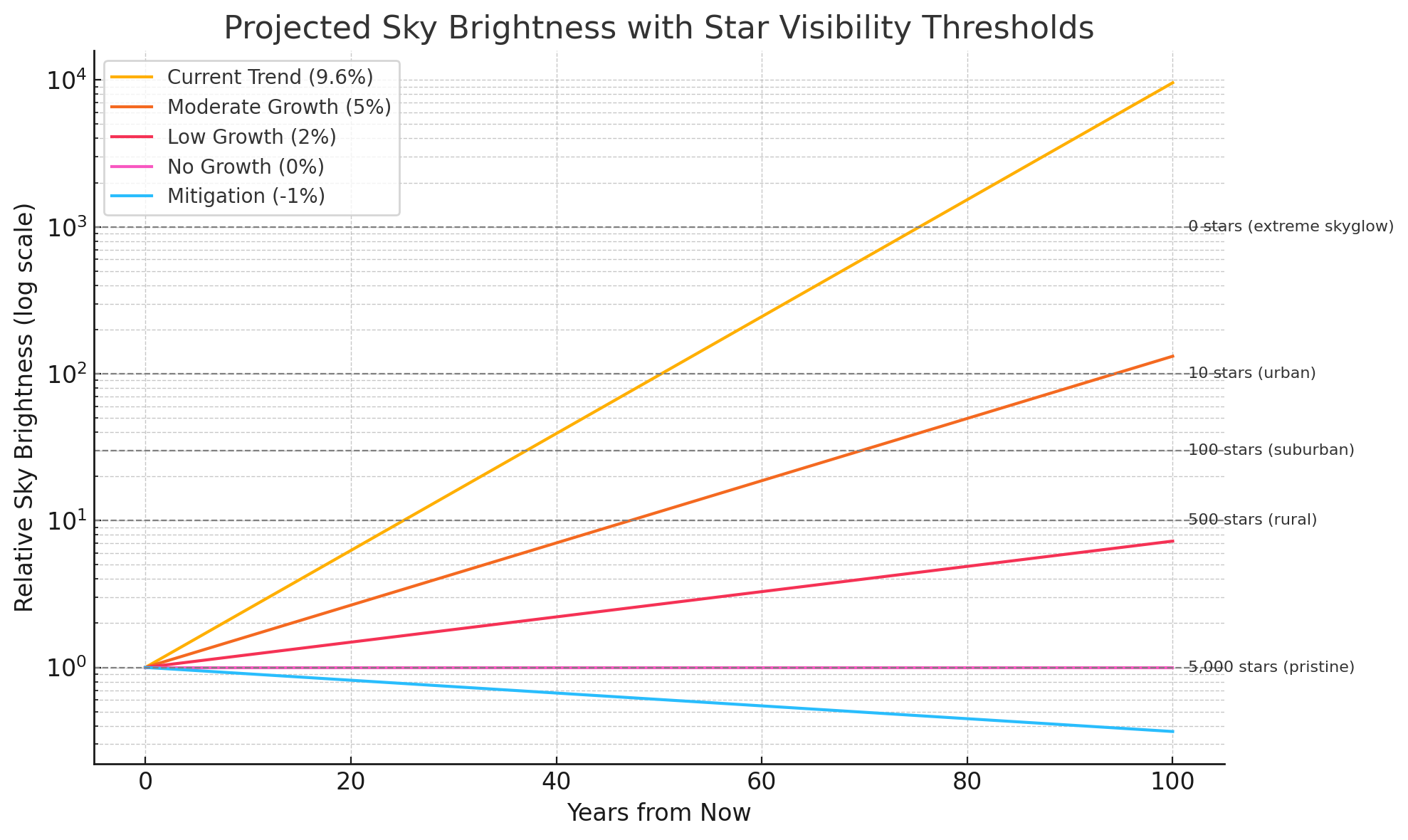
Struggling to keep the universe in sight
The future is too bright.
A satellite image of Texas at night shows the lights of cities and towns throughout most of the state. But in the Big Bend region along the Rio Grande, in the borderlands of Big Bend National Park and across the river in northern Mexico, light gives way to a jet-black void.
What you do not see is the Greater Big Bend International Dark Sky Reserve (DSR), an area of more than 15,000 square miles in which nighttime lighting is strictly controlled to preserve our ability to see the night sky.

Although Big Bend is the largest Dark Sky Place certified by DarkSky International, it is just one of 201 such places around the world as of 2023, including 97 in the US, 25 in Canada, and 22 in the UK.
I'm floored by our occasional ability to protect intangibles. I feel the same about the survival of Central Park in New York, 843 acres carved out of the most expensive real estate in the world and somehow protected for 170 years from attempts at development because parks are nice.
Although DarkSky makes a good effort at claiming a number of tangible harms from light pollution at night — harming biodiversity and human health, counter-intuitively causing more crime — the real but intangible benefit of dark skies is the mind-blowing recognition of our small place in the cosmos and the potential for life elsewhere.
Stick a pin in that.
A quick history of fading stars
In the pre-industrial era, before widespread artificial lighting, people under dark skies could see about 4,500 to 5,000 stars at once, with the total number visible across both hemispheres reaching about 9,000. In areas with exceptionally dark skies, such as Bortle Class 1 locations, observers might detect stars up to magnitude +8, potentially increasing the count to around 45,000.
But for most of that time, the universe was also thought much smaller than we now know it to be, smaller in diameter than our distance to the Sun. And the stars and planets were not other worlds but lights embedded in nested crystalline spheres. Neat in its way, but far less paradigm-rattling than what we know them to be now.
Gas lighting expanded in cities beginning in the early 1800s, increasing light levels but still limited in reach. Electric lighting (especially arc lights and later incandescent bulbs) became widespread by 1900, introducing more persistent and bright skyglow. Cities like New York, London, and Paris began to lose full darkness by the early 20th century.
Massive suburbanization and highway development brought illuminated infrastructure far beyond city centers. Industrial lighting, billboards, and commercial signage proliferated. In many large cities after the Second World War, the Milky Way disappeared from view. The shift to LED lighting increased total emitted light drastically due to higher blue light content, which scatters more in the atmosphere.
About 56% of the global population now lives in urban areas, a figure the UN projects will rise to 68% by 2050 and 85% by 2100. A 2016 study found that 83% of the global population now lives under light-polluted skies, and 99% of Americans and Europeans are unable to see the Milky Way.
The future of a visible cosmos
In pristine dark skies, such as those in the Big Bend DSR, up to 5,000 stars are visible. In suburban areas that drops to 500 stars. And in heavily light-polluted cities only the brightest stars and planets like Venus and Jupiter are visible to the unaided eye.
A 2023 study published in Science reports that the brightness of the night sky is increasing by about 9.6% annually. That trend may continue, level out, or decline depending on circumstances, perhaps including a collective decision that dark skies are worth protecting. If it continues, the night sky in 50 years could be over 100 times brighter on average than it is today. By 2100, most people on Earth would see no stars or planets at all. The sky would not be dark, but glowing with the diffuse light of cities, a kind of perpetual twilight.
Walking the streets of Chicago or Mumbai or Buenos Aires in perpetual twilight is an entirely different human experience from walking those streets with evidence of the galaxy above and around us, and the blackness of space beyond. It is so much easier to maintain the illusion that we and our concerns are enormously important while protected from the dislocating perception of that context in real time.
One factor mitigating against any improvement in the darkness of the sky is the rapidly growing contingent of artificial satellites, which reflect and scatter sunlight even at night. In 2015 there were approximately 1,305 satellites in Earth orbit. That number now exceeds 10,000, due largely to the 6,750 satellites launched by Elon Musk's Starlink since 2019. The company has announced an intention to increase their "megaconstellation" of deployed low-altitude satellites to 42,000. Not only naked-eye viewing but professional astronomy is affected by this engulfing net, with as many as one in 10 astronomical images ruined by satellite streaks and flares.

Experiencing the universe
Before Edwin Hubble discovered that “spiral nebulae” were actually galaxies outside the Milky Way, the Milky Way was believed to be the entire universe, containing everything that existed. After his discovery, the universe was understood to be 100 quadrillion times larger in volume, containing billions of galaxies. This influenced art, literature, philosophy, and theology, prompting questions about significance, isolation, and the potential for life elsewhere.
A generation later, the cosmos largely vanished.
For most of human history, we saw the stars but didn't really understand what we were seeing. Now we understand, but mostly can't see them. Even in the best conditions, our eyes only see our immediate neighborhood. But even that can be transformative.
Like quiet parks, the Dark Sky movement aims to preserve (or recover) an intangible treasure that would immeasurably deepen the future human experience of life on this planet. But before that can happen, there needs to be a much wider recognition of the value of the intangible things themselves.
Find a Dark Sky place near you
